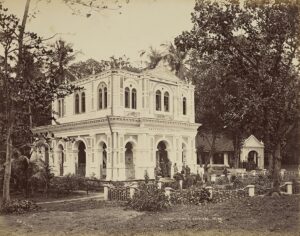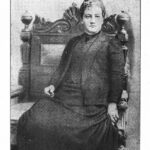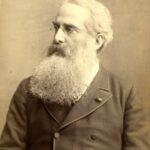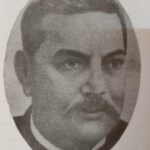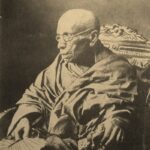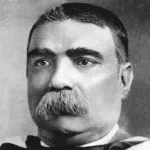Birth of the Maha Bodhi Society
The Buddha Gaya Maha Bodhi Society was founded in Ceylon on May 31, 1891. The Ven. Hikkaduwe Sumangala Nayaka Maha Thera presided over the inaugural meeting, at which Anagarika Dharmapala related how the impulse to restore the sacred shrine to Buddhist hands had come to him as he knelt beneath the ancient spreading branches of the Bodhi tree. After the high priest had spoken in support of the scheme, office-bearers of the newly-born Society were elected, with Ven. Sumangala as President, Col. Olcott as Director, Weerasekera and Dharmapala as Secretaries, DeAbrew as Treasurer, and Pandit Batuwantudawe and 12 others as members of the Committee.
The formation of one more Society did not attract much attention in those days of widespread Buddhist revival, and Dharmapala not only experienced difficulties in rousing the interest of the laity, but also in finding monks willing to accompany him to Buddha Gaya. But he was used to difficulties. Determined that on the full moon day of the month of Asadhi, when the Buddha preached his first sermon, members of the Sangha should once more be in residence in Buddha Gaya, he appealed first to the Siamese, then to the Burmese sect, and in the end succeeded in obtaining four monks.
On July 10th the party set out on their historic mission, reaching Calcutta on July 15 and arriving at their destination a few days later. In the evening of the day following their arrival the full moon rose bright and glorious in the blue sky, and Dharmapala notes with satisfaction in his diary that after seven centuries the Buddhist flag had been hoisted at Buddha Gaya.
World Conference
Having installed the four monks in the Burmese rest house, Dharmapala opened negotiation with the Mahant for the purchase of a piece of land, and at this point begins the story of his unequal struggle with the second wealthiest landlord in the whole province of Bihar, a struggle in which we hardly know whether to be more astonished at the invincible determination displayed on one side, or at the incredible business on the other.
The Vidyodaya Pirivena premises, Colombo, Ceylon where the Maha Budhi Society had its birth
Weary of all these vacillations, which were only a foretaste of what was yet to come, Dharmapala decided to organize an Inter- national Buddhist Conference, and after his return from a brief visit to Ceylon, the conference had its memorable sitting at Buddha Gaya, on October 31, 1891, on the eve of the Lt. Governor of Bengal’s visit to the holy spot.
Representatives from Ceylon, China, Japan and Chittagong attended and the Japanese delegates informed the conference that the Buddhists of their country would be willing to purchase the temple from the Mahant, in consequence of which it was resolved that a deputation should wait upon him with a proposal to that effect. It was further resolved to call subscriptions from all Buddhist countries for the construction of a monastery for propagation of the faith, and for translation of Buddhist texts into Indian languages.
In Calcutta
On October, 25, Dharmapala gave his first public lecture in India, at the Albert Hall, Calcutta, under the presidency of Mr. Narendra Nath Sen, his subject being “Buddhism in its relation to Hinduism”. At the beginning of 1892 the office of the Maha Bodhi Society was shifted to Calcutta, where the Bengali intelligentsia looked with sympathy upon the objects for which it had been founded, and in the month of May Dharmapala started the MAHA BODHI JOURNAL in order to facilitate the interchange of news among Buddhist countries.
Progress was by no means either smooth or easy, however; funds were often lacking and frequently the Society’s sole worker had to choose between buying stamps for posting the journal and food for his evening meal. But the sacrifice was made joyfully, with the reflection that since there was no self-there was no sacrifice.
Inspite of his activities in Calcutta and at Buddha Gaya, Dharmapala found time to attend the annual conventions at Adyar, as well as to establish relations with the Himalayan Buddhists of Darjeeling, to whom he presented some relics of the Buddha, a few leaves from the Bodhi tree, and a Buddhist flag. After the relics had been taken in a colourful procession through the crowded streets to the residence of Raja Tondub Pulger, where a number of Tibetan and Sikkimese dignitaries, both lay and ecclesiastical, had assembled, Dharmapala gave a speech on the ancient decline and modern revival of Buddhism and appealed to Buddhists of Tibet to support the work of the Maha Bodhi Society.
(Hindustan Standard-17.9.1964)
A Song of Buddha’s Love
A little bird sat on a green Bo-tree Singing of Buddha’s love,
Singing of Buddha’s love
An archer passed – “’tis well,” said he,
“I will slay this bird on the green Bo-tree,
On those branches high above!”
II
The little bird sat on the green Bo-tree
Singing of Buddha’s might
The Archer shot his arrow, -see!
It flies toward the mark, – but the green
Bo-tree
Wind-blown, swayed to the right;
III
And the arrow passed the little bird
singing of Buddha’s might:
The archer listened, – and as he heard
The heart grew soft at song of the bird
And his eyes’ can sense the light.
IV
The sunlight gleamed on the green Bo-tree,
The little bird sand, and the wind
Lough low,
And the Archer said: “There ne’er shall be
A living creature slain by me,” –
And he broke his arrows and bow.
V
The little bird sat on the green Bo-tree
Singing of Buddha’s love
And he sang his song for you and me,
And he sang for the world and green
Bo-tree,
In the branches high above

